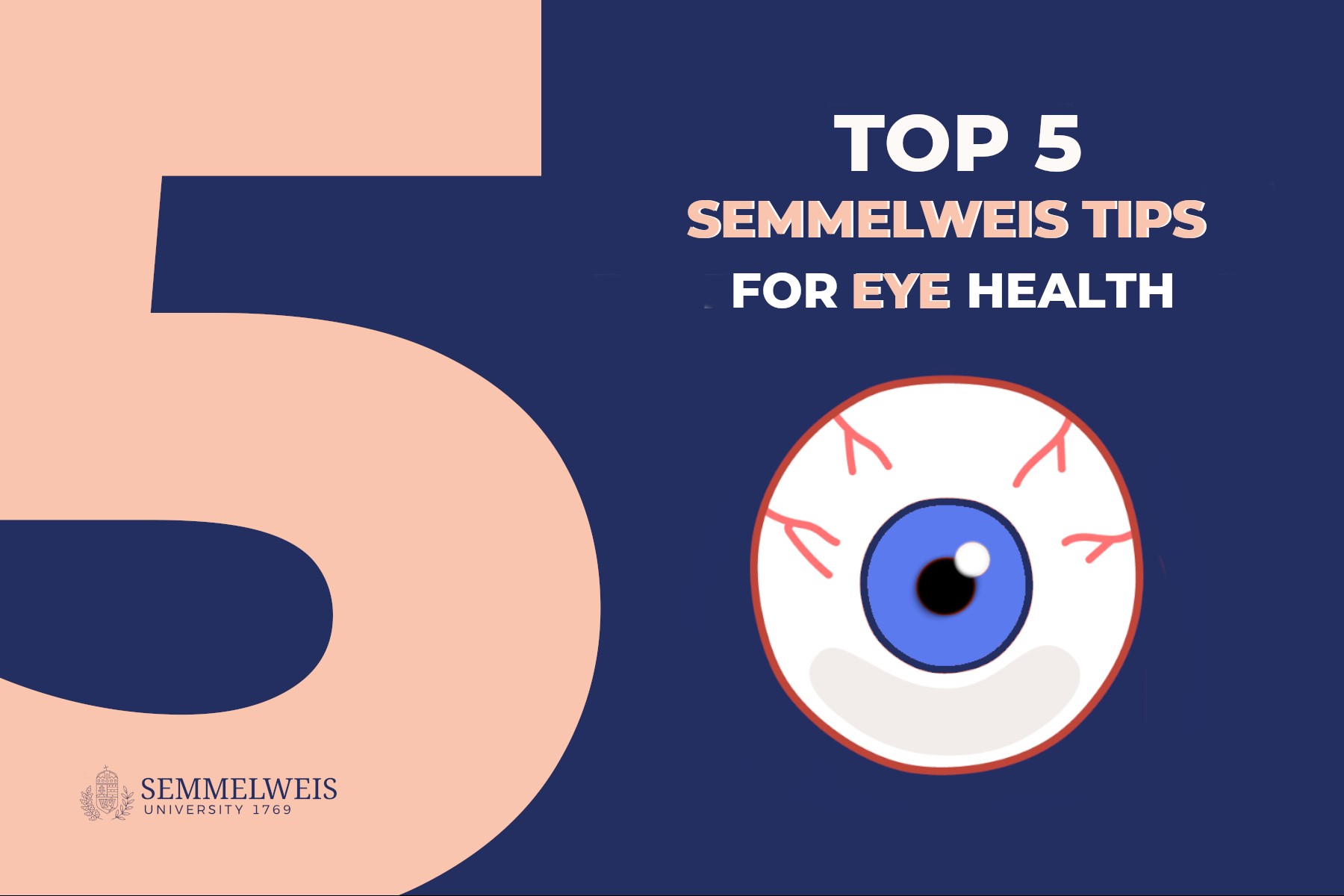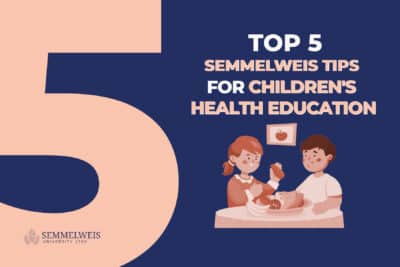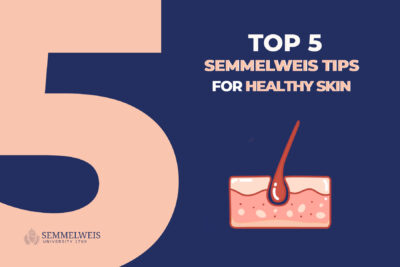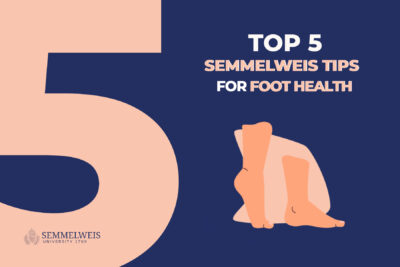1. Minimize screen time: School children should be limited to one to two hours, adults to six hours a day
 Various blue and artificial light-emitting devices can contribute to developing myopia (nearsightedness), especially in childhood, Dr. Zoltán Zsolt Nagy warned. The department’s survey of 10-year-olds found that while in the past, a quarter of children (20-25 percent) were nearsighted, the figure had risen to 56 percent by 2023.
Various blue and artificial light-emitting devices can contribute to developing myopia (nearsightedness), especially in childhood, Dr. Zoltán Zsolt Nagy warned. The department’s survey of 10-year-olds found that while in the past, a quarter of children (20-25 percent) were nearsighted, the figure had risen to 56 percent by 2023.
This results from screen time, excessive use of smartphones, little leisure and outdoor time, and the fact that during the COVID-19 pandemic, everything was restricted to the online space, including education, to which this generation got accustomed, and they hardly communicate face-to-face, the director said. He added that in East Asian countries the rate of myopia was over 90 percent, so in China, for example, the lower age limit for phone use was eight years.
Dr. Zoltán Zsolt Nagy emphasized that it was advisable to minimize screen time in childhood: Depending on their age, children should watch no more than 1-2 hours of TV or smartphone, and preferably avoid watching TV or using smartphones altogether under the age of two. Screen time should not exceed 6-7 hours for adults, either.
Those who work in front of a computer should look out of the window for a few minutes at least every hour and a half to rest eye muscles that have contracted from looking too closely. Blue light-blocking lenses, also available non-dioptric, are also beneficial.
Eye exercises and “ditch your glasses” movements have no anatomical basis in the case of myopia, the specialist points out, as the eyeball follows the shape of the bony eye socket, which cannot be influenced by exercises. With farsightedness, caused by a shorter eyeball, muscle training can achieve temporary results. However, around the age of 40-50, the lens becomes inflexible and reading glasses may be necessary for most people.
2. Smoking is bad for your eyes, so avoid cigarettes.
One of the most common causes of vision loss is age-related macular degeneration (AMD) when the part of the eye’s nerve membrane responsible for sharp vision is damaged. Smoking increases the risk of significant vision impairment caused by AMD three to four times.
Smoking a pack of cigarettes a day increases the risk of developing cataracts, a disease that causes a cloudy area in the lens of the eye, by two and a half times.
Dr. Zoltán Zsolt Nagy highlights other lifestyle factors, as diseases caused by a poor, unbalanced diet, high blood pressure, and diabetes also increase the risk of developing certain eye diseases. Diabetes-induced retina damage is the second most common cause of blindness, and the lack of oxygen in the blood vessels caused by smoking can accelerate deterioration. Smoking affects less well-known eye diseases negatively, too; for example, the so-called anterior ischemic optic neuropathy, which involves necrosis of the optic nerve and causes permanent blindness, is sixteen times more common in smokers.
A balanced diet is also vital for eye health. Vitamins A, D, E, and C are beneficial for eyesight, but according to Dr. Zoltán Zsolt Nagy, they should only be taken after medical consultation, as they may not always be absorbed effectively.
3. Just like the skin, the eyes must be protected from harmful UV rays.
UV radiation can not only damage our skin but also our eyes. There are two types of UV radiation: UV-A and UV-B. Both types are harmful to the eyes, but the right sunglasses will block both. UV-B is generally more harmful because it carries more energy, but most of it is absorbed by the cornea and lens. UV-A radiation is lower in energy but less absorbed by the front tissues of the eye, so it can cause more damage to the interior of the eye. We are exposed to UV radiation all year round, but more so in the summer months and near reflective surfaces: on the waterside, on water or snow, or in high mountains. Exposure to high levels of UV radiation can lead to a surfer’s eye, i.e. an overgrowth of your conjunctiva tissue, but it can also increase the risk of cataracts and even cause cancer not only in the skin of the eyelid but also in the eye itself. If the eyes are suddenly exposed to high levels of UV light, for example when skiing without eye protection and the cornea is “burnt” by the light reflected from the snow, snow blindness (photokeratitis) can develop, causing redness and a burning, itchy sensation.
What makes for high-quality sunglasses?
Make sure your sunglasses filter out both UV-A and UV-B rays. Look for products that are labeled UV400, which means they block 100 percent of radiation up to 400 nanometers. Lens shade and darkness are irrelevant to UV radiation, but the shape is: The bigger the better, as sunlight from the sides can damage the eyes, so opt for curved-arc, large-lens sunglasses.
4. Drink plenty of fluids and use preservative-free eye drops regularly to prevent dry eyes.
 Dry eye syndrome affects one in three people and is even more common in the elderly. Dryness can result from screen time, staying up late, inadequate tear production, wearing contact lenses, autoimmune disease, and can also be a side effect of certain medicines. Symptoms of dry eye syndrome can include a stinging sensation, eye fatigue, and redness in both eyes, but in more severe cases, even sensitivity to bright light. Most of the time, there is no irreversible damage, but it is worth consulting a specialist who can find out the underlying cause and recommend targeted eye drops. Dr. Zoltán Zsolt Nagy emphasized that the symptoms could be alleviated by proper hydration, i.e. drinking 2-3 liters of fluid daily and with air humidifiers. We should always opt for preservative-free eye drops.
Dry eye syndrome affects one in three people and is even more common in the elderly. Dryness can result from screen time, staying up late, inadequate tear production, wearing contact lenses, autoimmune disease, and can also be a side effect of certain medicines. Symptoms of dry eye syndrome can include a stinging sensation, eye fatigue, and redness in both eyes, but in more severe cases, even sensitivity to bright light. Most of the time, there is no irreversible damage, but it is worth consulting a specialist who can find out the underlying cause and recommend targeted eye drops. Dr. Zoltán Zsolt Nagy emphasized that the symptoms could be alleviated by proper hydration, i.e. drinking 2-3 liters of fluid daily and with air humidifiers. We should always opt for preservative-free eye drops.
5. Be careful about hygiene, never touch your eyes with dirty hands.
Pink eye (conjunctivitis) is very often caused by bacterial or viral infections, and the pathogens are usually transmitted to the eyes by our hands. Hand hygiene is especially important for children and adults wearing contact lenses, warns Dr. Zoltán Zsolt Nagy. Children’s hands are generally dirtier, as they explore the world through touch. The symptoms most often develop in fall and winter or during the allergy season for those affected. As conjunctivitis is an infectious disease in most cases, early diagnosis and treatment are crucial. At the Department of Ophthalmology, many patients show symptoms of corneal inflammation, added the director. The most common cause of corneal inflammation is improperly stored and applied contact lenses. Proper hygiene is fundamental, as contact lenses can be an excellent host for many pathogens: Always wash your hands thoroughly before touching your eyes, and always lubricate contact lenses with the appropriate liquid or eye drops, and never with saliva, said Dr. Zoltán Zsolt Nagy. No permanent lesion develops after the inflammation of the outer layer of the cornea has healed. However, deeper inflammation can lead to scarring and blurring, which can impair vision.
+1 Don’t skip your eye check-ups.
Annual eye examinations are important not only for your eyesight but also for the early detection of more serious diseases such as melanoma, the most common malignancy in the eye. The likelihood of developing tumors increases with age. Risk factors include light eyes and fair skin, a family history of malignant tumors, and increased exposure to UV light. It may be indicated by progressive deterioration of vision, distorted or wavy vision, loss of visual field, eye pain, or a brown spot on the wall of the eye. Like on the skin, moles on the bottom of the eyes can also become malignant. Melanoma in the eye is most often detected by an ophthalmologist during a simple eye examination.
Eszter Keresztes
Translation: Judit Szabados-Dőtsch
Photos by Attila Kovács – Semmelweis University




